
This eBook is enhanced with related annotations, a premium service that offers samples not normally available to readers. The books are published by Portfolio Penguin, and include business, inspirational and personal development titles.
Click on the icon [ ] throughout the book to see related excerpts from other Portfolio Penguin books. You can go back to reading anytime by clicking back to my book, or learn more about the referenced excerpted book by clicking read more.
] throughout the book to see related excerpts from other Portfolio Penguin books. You can go back to reading anytime by clicking back to my book, or learn more about the referenced excerpted book by clicking read more.
Questions or comments?
KHOI TU
Superteams
The Secrets of Stellar Performance from Seven Legendary Teams
Contents
Advance praise for Superteams:
Insightful this book will be essential in any managers toolkit Sir Nicholas Young, CEO of the British Red Cross
Demystifies and choreographs whats needed to create high-performance teams. Anybody interested in teambuilding and teamwork should have a serious look at this book Manfred F. R. Kets de Vries, INSEAD Global Leadership Centre
Khoi Tu has an inspirational mind, full of curiosity, and a strong desire to find solutions for issues that can seem to be unsolvable Sir Jackie Stewart, three-time World Drivers Champion
Khoi Tu is the most visionary among visionaries
Management Today
ABOUT THE AUTHOR
Khoi Tu is a sought-after leadership and teamwork consultant who has worked with teams at Coca-Cola, BP, Deutsche Bank, UBS, Tesco, LVMH and the British Red Cross. He has also advised some of the world's most influential individuals, including Jamie Oliver, leading entrepreneurs and Formula One World champions. A graduate of the London School of Economics, he worked around the world for Shell before joining the pioneering web design company Razorfish during the early days of the dot com boom. He jointly founded a leadership advisory firm with Booz Allen Hamilton before founding his own company, Inverstar, in 2006.
Khoi Tu will donate all his royalties from the sale of this book to the British Red Cross, which works both in the UK and overseas.
I honestly believe that none of us are as strong individually as we are collectively.
Ronnie Wood
Introduction
The idea for this book began to form while I was working as a strategy and leadership consultant with some inspiring individuals, including world champion Formula 1 drivers and the leaders of some of the largest and most successful organizations in the world.
I am fascinated by such people. What qualities do these individuals possess that enable them to achieve so much? In my experience, there is no question they have something special. What stands out first and foremost is their sense of purpose, determination and self-belief as Muhammad Ali put it, champions must have the skill, but the will has to be stronger than the skill.
However, as I spent more time with them, another pattern emerged. Their success came, I realized, from more than simply their individual brilliance. The myth of the single hero is just that: a myth. Even the Lone Ranger had Tonto. On stage, in the boardroom or on the racetrack, what makes superstars so super is the amplification of their individual brilliance by a great team. Their interaction with a team made the crucial difference.
An F1 driver can be instinctively quick, but finish down the field in a poorly designed car running the wrong race strategy. And while the image of James Bond single-handedly saving the world captures our imagination, the reality is that the most urgent and daring missions are executed by teams of elite soldiers, hand-picked and specially trained. In the aftermath of disaster, individual acts of humanity can save lives and restore dignity. Organized in the right way, these individual acts can combine to save a country.
Most challenges of consequence require a collective response. Individual excellence is both necessary and critical, but the skill and the will to build, lead and perform in a team is often the difference between success and failure. Even for individual stars, failing to work effectively in a team can be a career-limiting flaw. In an interconnected world, the inability to be a good team player can have the same effect as kryptonite on Superman.
Even if this seems self-evident, it is easier said than done. Great teams are rare, and even fewer remain great for long. Most of us have experienced the thrill and camaraderie that result from working in synchronicity with others, but we have also had to endure endless unproductive meetings, destructive conflicts and a niggling sense that our colleagues are simply not trying as hard as we are, yet are getting more favourable treatment.
The aim of this book is to explore and unravel the inner workings of some great and high-performing teams seven Superteams and through that to show how you can build your own better teams.
I chose each team at one important moment in its history, to try to uncover specific insights that can be translated into practical action.
My first Superteam is Pixar, a film studio that has had an unrivalled run of box office success, unique in an industry known for many releases but few hits. The Pixar team succeeded by fusing diverse skills and very different, often difficult personalities (including Steve Jobs) around a common purpose.
I then turn to golf, specifically to the 2010 European Ryder Cup team. How did the captain, Colin Montgomerie, construct a winning team comprising twelve players usually characterized by their intense rivalry?
The armed forces provide the personnel for the next team. The SAS is the blueprint for special forces around the world. Tracing the story leading up to the freeing of the hostages held by terrorists during the 1980 Iranian embassy siege in London offers insights for all teams into how to select and train for great results.
In a closely associated though almost polar opposite field, my work with Sir Nicholas Young and his team at the British Red Cross, and my experience of their purposeful professionalism in action, was one of the main inspirations for this book. (Indeed, all the royalties from its sales will go to support their vital work.) Their response to the Haiti earthquake epitomizes the idea that teamwork can change the world for the better.
The idea that the stars that burn brightest tend to burn out quickest is often used to explain the failure of many bands to survive beyond their first album. The story of the Rolling Stones shines a light on how to burn brightly for fifty years as the greatest rock n roll band in the world.
Superteams dont always start out that way. The collection of leaders who drove the Northern Ireland peace process became a team, despite starting out as sworn enemies holding diametrically opposed views. Their story is a triumph of the politics of peace and also offers valuable lessons in how to master intra-team conflict.
Finally comes the Ferrari F1 team during their journey back from two decades of underachievement to the front of the Formula 1 grid. Their experience highlights how teams can overcome the many challenges of change to find success.
In submerging myself within these seven stories I learned many new things about teams. The research, including discussions with many of the team members themselves, was enlightening. The findings, included in the Team Talk section of each chapter, challenged some of the myths of teams, as well as validating many of the tried and tested approaches I have used.
Next page
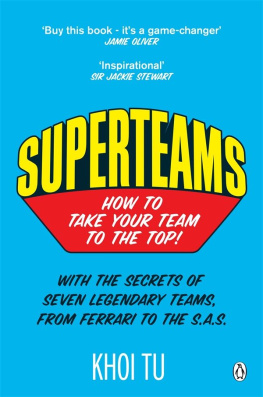

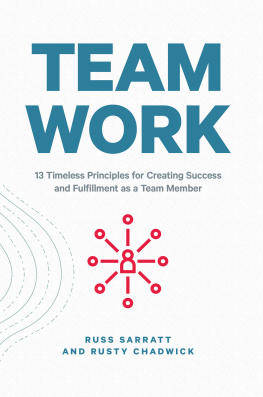

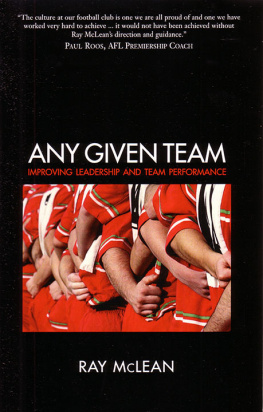
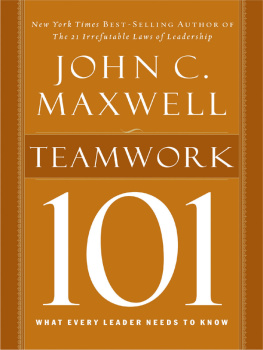
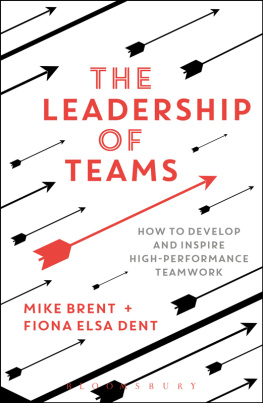

 ] throughout the book to see related excerpts from other Portfolio Penguin books. You can go back to reading anytime by clicking back to my book, or learn more about the referenced excerpted book by clicking read more.
] throughout the book to see related excerpts from other Portfolio Penguin books. You can go back to reading anytime by clicking back to my book, or learn more about the referenced excerpted book by clicking read more.